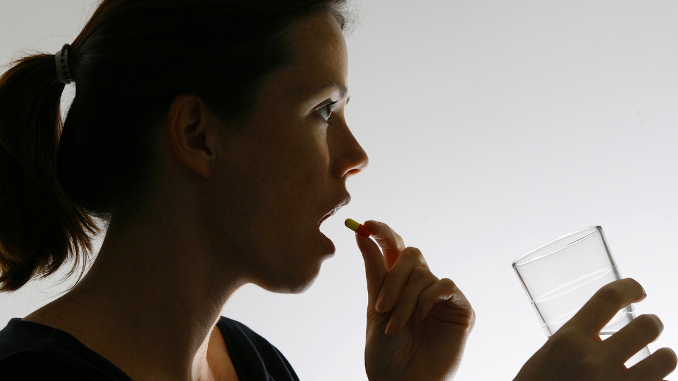
By Donald Jeffries
Most adults in America take at least one prescription regularly, or “meds,” as they are called. Every television network runs one commercial after another promoting pharmaceutical products, with the often-deadly potential side effects rapidly mentioned at the close. These commercials intersperse “Ask your doctor” and “Check with your doctor” repeatedly.
In 2019, the most recent year where data was available, the average American was spending some $1,376 annually for medications, which was 47% higher than the country in second place, Germany. English-speaking countries shared the common feature of heavy spending on over-the-counter medications, in addition to all the doctor prescribed drugs. Insurance companies covered about 70% of pharmaceutical costs in the United States, below the 80% in countries like Germany and France. It is almost a certainty that American dependence on drugs has only grown more prevalent since the Covid-inspired lockdown, which increased depression and suicide rates.
Numbers from 2014 revealed that some three million American youngsters were on medications like Adderall and Ritalin, an astounding 2,000% increase since the mid-1980s. Again, the number of children medicated for attention deficit disorder (ADD) and autism spectrum disorders has unquestionably grown since then. It is easier to get adults to take the often-poisonous products of Big Pharma if they became customers as children.
The United States also has a severe opioid epidemic, with too many Americans unable to stop taking opioid-based drugs like OxyContin for pain. An increase in illegal fentanyl is involved here as well. The problem is so bad that there are increasing numbers of newborn babies experiencing withdrawal symptoms, after being born to mothers hooked on opioids during pregnancy.
In 2021, an alarming 107,000 Americans died of drug overdoses, the most in recorded history. The two most common drugs responsible for these deaths were fentanyl and crystal meth. College students will use Adderall or common forms of “speed” in order to cram for tests. Social media provides an easy platform for both buyers and sellers of these drugs. The Covid “pandemic,” with lockdowns cutting off essential social contacts, helped trigger a significant increase in drug use.
A 2013 Mayo Clinic study found that about 70% of Americans take at least one regular prescription drug. More than half the population takes at least two. These were the latest available numbers, and they are unquestionably higher now. In a very telling quote, researcher Jennifer St. Sauver noted, “Often when people talk about health conditions they’re talking about chronic conditions such as heart disease or diabetes. However, the second most common prescription was for antidepressants—that suggests mental health is a huge issue and is something we should focus on. And the third most common drugs were opioids, which is a bit concerning considering their addicting nature.”
A 2019 updated poll showed that almost 90% of Americans aged 65 or older were on at least one prescription medication. 75% of those aged 50 to 64 were on meds, while over half of the 30 to 49 group and a shocking 40% of those aged 18 to 29 were taking the products of Big Pharma. Some 54% of the over 65 crowd reported taking four or more prescription drugs.
The Medical Industrial Complex considers natural alternatives, from chiropractors to acupuncture to vitamin and mineral supplements, to be unwanted competition. In decades past, the FDA raided and closed down many vitamin shops and health food stores. Now, they simply push the propaganda that there is “no credible evidence” that natural remedies work. Many people swear by the beneficial properties of garlic, turmeric, vitamin C, vitamin D, zinc, apple cider vinegar, and numerous other natural substances. The increasing legalization of marijuana has resulted in more people turning to the curative effects of CBD oil, a primary ingredient of cannabis.
And what do the success rates of placebos say about any of these Big Pharma drugs? For example, a recent study found that placebos were 50% as effective in reducing migraine pain as the actual drug was.
A recent New England Journal of Medicine report found that 94% of doctors had “some type of relationship with the pharmaceutical industry.” Doctors have an obvious financial motive in prescribing drugs and dismissing vitamins, for instance. Big Pharma companies have provided food and other gifts to physicians. They also hand out drug samples, provide payments for drug trials, give paid lectures, and even reimburse continuing medical education costs. A 2011 report found regular instances of “kickbacks” to doctors and hospitals that amounted to some $300 million. Again, the figure is likely much higher now. There have even been scandals where Big Pharma companies bribed doctors to prescribe drugs patients didn’t need.
Americans need to eat better, exercise more, and take fewer drugs.






Exercise and intermittent fasting. My experience is the less I drive around and the more I walk, the better my mood. With intermittent fasting, I have been able to lose and keep off 20 lb’s. A lot of chronic conditions are made worse by being overwaight and dietary sugar.
I am speachless. A stupid population is a dangerous one.
No doubt.